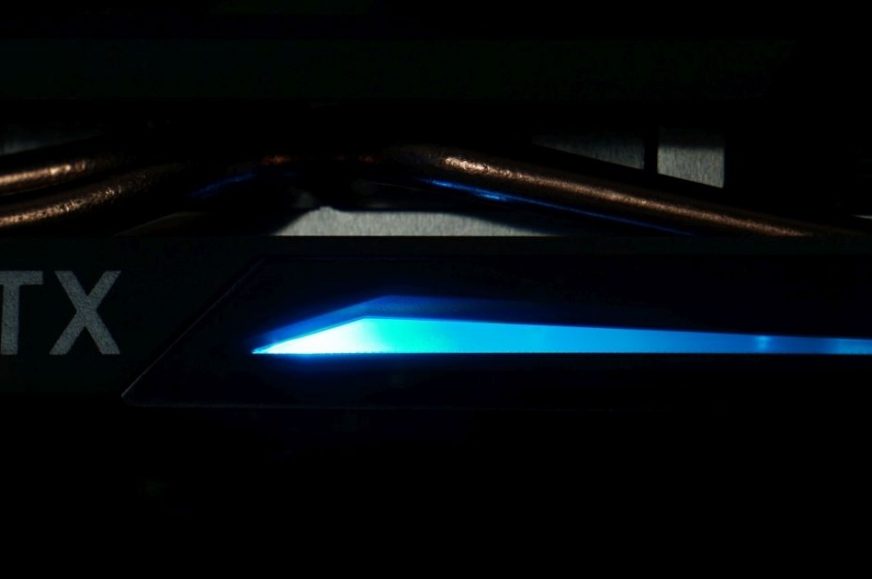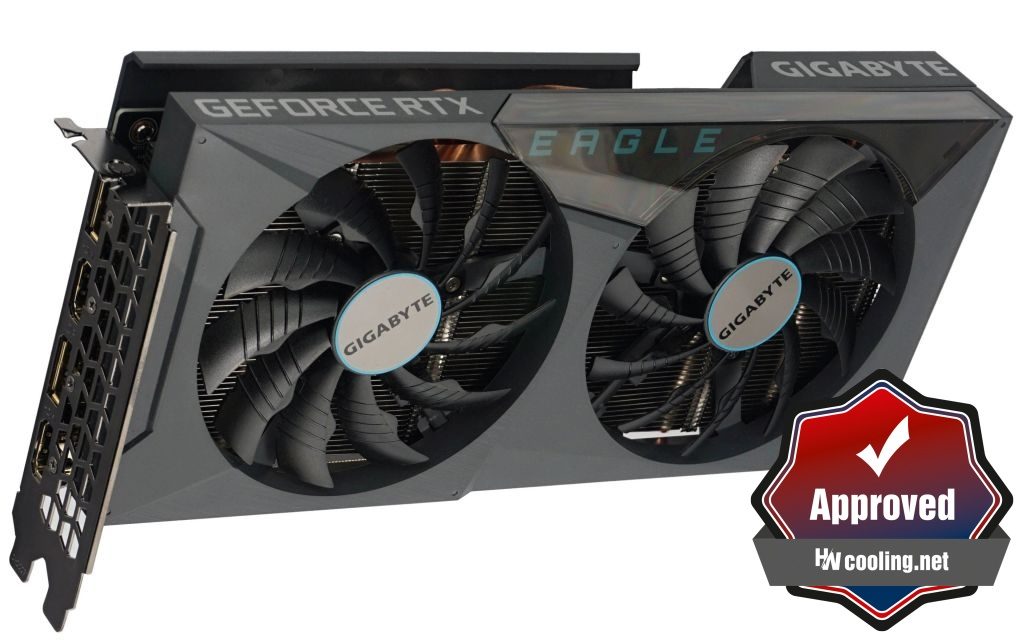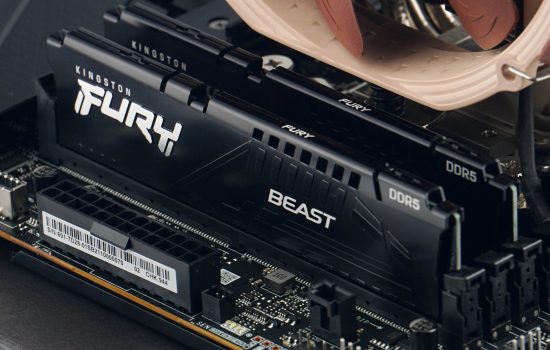Conclusion
At the end of last month, the 60-series GeForce RTX finally came out, which has had high popularity every generation. The RTX 3060 is the cheapest Ampere graphics card so far, and the Gigabyte Eagle (OC) version is also relatively power-efficient. Both in terms of smaller dimensions and relatively lower power draw. However, a detailed analysis is required for the bigger picture, to which we’re inviting you.
Conclusion
There is no equivalent AMD card for the GeForce RTX 3060 yet, and it probably won’t change until the RX 6700 is released. We must therefore draw conclusion in a slightly different spirit than comparative, it lags behind the RX 6800 by 16–21% on average depending on the resolution and the RTX 3070 (Gaming X Trio) by 27–30%. This is only for rough orientation, it may naturally vary slightly across different versions.
The Gigabyte RTX 3060 Eagle OC 12G handles most games at highest settings without ray-tracing graphics at above 60 fps, even at a resolution of 2560 × 1440 px. Tested games that move below this limit include Borderlands 3, Control, Cyberpunk 2077 (but here, DLSS can be the way to go) or Total War: Saga Troy. But you most likely won’t complain about QHD smoothness in AAA titles, such as Red Dead Redemption 2 or Assassin’s Creed: Valhalla. In addition, ACV is the only game where the RTX 3060 in higher resolutions QHD/UHD delivers higher performance than the RTX 3070. The higher the resolution, the higher the difference (up to +26% or 11 fps in UHD), which points to the importance VRAM size, from which Radeons also benefit greatly here.
For example, DOOM Eternal, FIFA 21 or Wasteland 3 are games that you can enjoy smoothly in UHD/2160p as well, but they are only light exceptions just out of interest and we’re not encouraging you to get an RTX 3060 card for such a high resolution. Not even those 12 GB of VRAM make up for it, and especially in higher resolutions, the lack of performance can be felt compared to higher series.
The raw performance of this specific RTX 3060 is lower than of RX 6800, but in 3D rendering with CUDA/OptiX it gives slightly better resulst (than Radeon with OpenCL), while consuming slightly less energy. The price of the RTX 3060 is also lower and a surcharge for the overclocked version Eagle OC is low and the actual GPU clock speed (1900–1905 MHz) is really nice and the price/performance ratio is also attractive. Its coefficient for QHD resolution is up to 4.32, which is excellent – so far the highest (i.e. the most advantageous) of the graphics cards tested so far.
The most significant negative of the RTX 3060 Eagle OC is higher noise. It is a tax for smaller dimensions and it is necessary to take into account that this graphics card is simply quite noisy, it will significantly drown out even the RTX 3090 Gaming X Trio with more than double power consumption. And yet it does not have too high regulation. Hotspots (at an average GPU temperature of 66–67 °C) reach 81 °C in a well-cooled case, which is just about right. With lower load, the operation is passive, but switches to active very quickly, where after reaching 50 °C on the GPU, the fans are already running at 80% which is around 1,450 rpm.
But despite higher cooler noise, quiet coils nicely surprised me. These are noticeably quieter than any of the other graphics cards tested so far. The main advantages of the RTX 3060 Eagle OC include a favorable price under normal circumstances, very decent efficiency or high performance per watt, but also smaller dimensions and excellent compatibility with PC cases or other expansion cards. The RTX 3060 Eagle OC 12G does not suffer from any major drawbacks and therefore we’re giving it our editorial award ”Approved”.
| Gigabyte RTX 3060 Eagle OC 12G |
| + High performance, sufficient for gaming in 1440p/QHD |
| + Favorable price/performance ratio |
| + Finally a graphics card with lower power draw |
| + Decent efficiency (performance per watt) |
| + Up to 12 GB VRAM |
| + Still without competition in this price range |
| + First GeForce to support Resizable BAR |
| + Very quiet coils |
| + Exclusive support of DLSS (2.0), CUDA and OptiX |
| + Dual-slot design and overall smaller dimensions |
| - Higher noise of the cooler |
| - Unavailability |
| MSRP: € 443/CZK 11,600 |
Thank you to Spacebar for providing us with games for our tests
- Contents
- Gigabyte RTX 3060 Eagle OC 12G – details
- Specs table
- Methodology: performance tests
- Methodology: how we measure power draw
- Methodology: noise and sound measurement
- Methodology: temperature tests
- Test rig
- 3DMark
- Age of Empires II: DE
- Assassin’s Creed: Valhalla
- Battlefield V
- Battlefield V with DXR
- Borderlands 3
- Control
- Control with DXR and DLSS
- Counter-Strike: GO
- Cyberpunk 2077
- Cyberpunk 2077 with DLSS and FidelityFX CAS
- Cyberpunk 2077 with DXR, DLSS and FidelityFX CAS
- DOOM Eternal
- F1 2020
- FIFA 21
- Forza Horizon 4
- Mafia: DE
- Metro Exodus
- Metro Exodus with DXR and DLSS
- Microsoft Flight Simulator
- Red Dead Redemption 2 (Vulkan)
- Red Dead Redemption 2 (Dx12)
- Shadow of the Tomb Raider
- Shadow of the Tomb Raider with DXR
- Total War Saga: Troy
- Wasteland 3
- Overall game performance and performance per euro
- CompuBench (OpenCL)
- CompuBench (CUDA)
- SPECviewperf 2020 and SPECworkstation 3
- FLOPS, IOPS and memory speed tests
- 3D rendering 1/2 (LuxMark and Blender@Cycles)
- 3D rendering 2/2 (Blender@Radeon ProRender and Eevee)
- Photo editing (Adobe Photoshop, Lightroom and Affinity Photo)
- Broadcasting (OBS and Xsplit)
- Password cracking
- GPU clock speed
- GPU and VRAM temperatures
- Net GPU power draw and performance per watt
- Analysis of 12 V subcircuit power supply (higher load)
- Analysis of 12 V subcircuit power supply (lower load)
- Analysis of 3.3 V subcircuit power supply
- Noise level
- Frequency response of sound
- Conclusion













